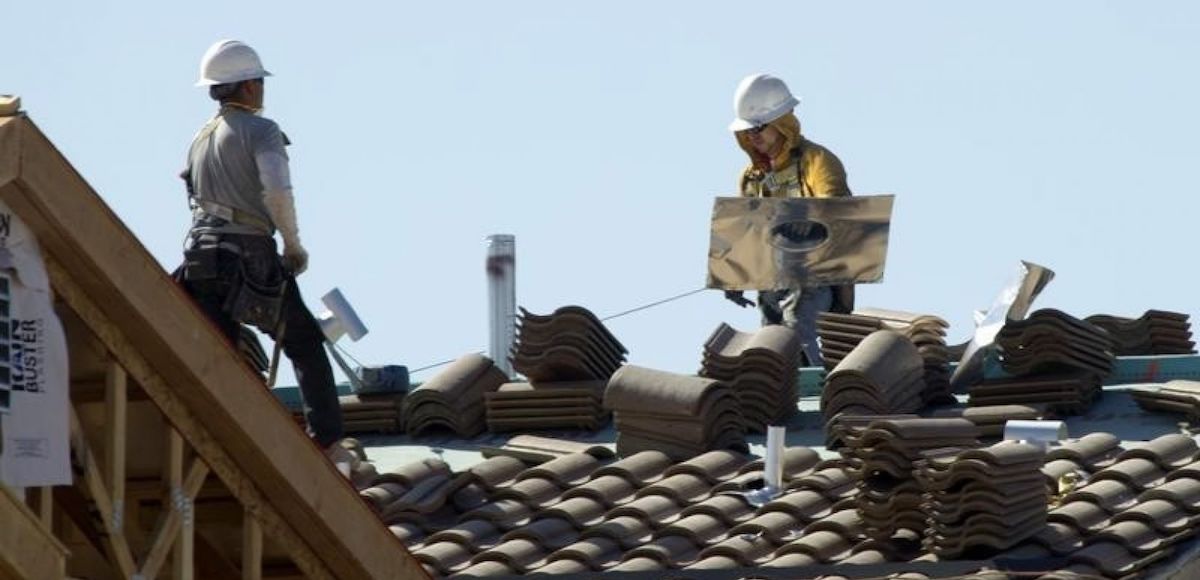

Roofers work on new homes at a residential construction site in the west side of the Las Vegas Valley in Las Vegas, Nevada April 5, 2013. (Photo: Reuters)
The National Association of Home Builders/Wells Fargo Housing Market Index (HMI) found builder confidence remained solid and unchanged at 67 in September. That’s a match for the 67 median economic forecast.
“Despite rising affordability concerns, builders continue to report firm demand for housing, especially as millennials and other newcomers enter the market,” said NAHB Chairman Randy Noel, a custom home builder from LaPlace, La. “The recent decline in lumber prices from record-high levels earlier this summer is also welcome relief, although builders still need to manage construction costs to keep homes competitively priced.”
Derived from a monthly survey that NAHB has been conducting for 30 years, the NAHB/Wells Fargo Housing Market Index gauges builder perceptions of current single-family home sales and sales expectations for the next six months as “good,” “fair” or “poor.” The survey also asks builders to rate traffic of prospective buyers as “high to very high,” “average” or “low to very low.” Scores for each component are then used to calculate a seasonally adjusted index where any number over 50 indicates that more builders view conditions as good than poor.
“A growing economy and rising incomes combined with increasing household formations should boost demand for new single-family homes moving forward,” said NAHB Chief Economist Robert Dietz. “However, housing affordability is becoming a challenge, as builders face overly burdensome regulations and rising material costs exacerbated by an escalating trade skirmish. Interest rates are also forecasted to keep rising.”
The HMI index measuring current sales conditions rose one point to 74 and the component gauging expectations in the next six months increased two points to 74. Meanwhile, the metric charting buyer traffic held steady at 49.
Looking at the three-month moving averages for regional HMI scores, the Northeast rose one point to 54 and the South remained unchanged at 70. The West edged down a single point to 73 and the Midwest fell three points to 59.
The HMI is a weighted average of separate diffusion indices for these three key single-family series. The first two series are rated on a scale of Good, Fair and Poor and the last is rated on a scale of High/Very High, Average, and Low/Very Low. A diffusion index is calculated for each series by applying the formula “(Good-Poor+100)/2” to the present and future sales series and “(High/Very High – Low/Very Low + 100)/2” to the traffic series. Each resulting index is then seasonally adjusted and weighted to produce the HMI.
The most damning journalistic sin committed by the media during the era of Russia collusion…
The first ecological study finds mask mandates were not effective at slowing the spread of…
On "What Are the Odds?" Monday, Robert Barnes and Rich Baris note how big tech…
On "What Are the Odds?" Monday, Robert Barnes and Rich Baris discuss why America First…
Personal income fell $1,516.6 billion (7.1%) in February, roughly the consensus forecast, while consumer spending…
Research finds those previously infected by or vaccinated against SARS-CoV-2 are not at risk of…
This website uses cookies.